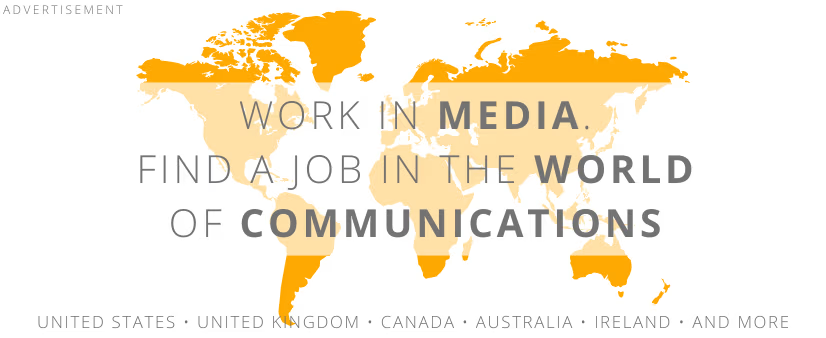 illustration: Bing AI
illustration: Bing AIPredictive analytics involves using historical data, machine learning algorithms, and statistical modeling to forecast future customer behaviors. It enables companies to predict consumers’ needs, preferences, and purchasing intentions. The McKinsey report indicates that 72% of organizations using AI apply predictive analytics in at least two business functions, making it one of the most versatile tools in marketing.
- 65% of companies use predictive analytics for marketing offer personalization.
- 34% of companies apply predictive models to prioritize potential customers.
- Companies using predictive analytics see a 5-10% annual revenue increase.
For example, a large retail company used predictive analytics to forecast holiday season product demand, optimizing inventory levels and avoiding overstocking.
Practical Applications of Predictive Analytics in Marketing
The McKinsey report shows that predictive analytics is widely used across various marketing areas, helping companies achieve better results. The most popular applications include:
- Customer segmentation Predictive analytics enables identifying target groups based on demographic, behavioral, and purchasing data. This allows for precise targeting of marketing campaigns. Example: An e-commerce platform used predictive segmentation, increasing email campaign effectiveness by 20%.
- Churn prediction Predictive models help companies forecast which customers might stop using their services. Companies can then take preventive measures, such as offering promotions or improving customer service. Example: A telecom operator reduced churn rates by 15% through behavior prediction and early interventions.
- Price optimization Analytical algorithms analyze market data to help companies set prices that maximize profits while remaining attractive to customers. Example: A hotel chain used predictive analytics for dynamic pricing, resulting in an 8% revenue increase during the tourist season.
| Application | Effects | Example |
|---|---|---|
| Customer segmentation | +20% campaign effectiveness | E-commerce |
| Churn prediction | -15% churn rate | Telecom |
| Price optimization | +8% revenue | Hotel chains |
Challenges of Predictive Analytics
Despite its immense potential, companies face challenges in implementing predictive analytics. The McKinsey report highlights:
- 44% of organizations report difficulties with data quality on which predictive models are based.
- 18% of companies have implemented regular audits of analytical models.
- Only 35% of organizations provide adequate training for their teams, limiting implementation efficiency.
For example, in the financial sector, errors in credit risk modeling led to inconsistencies in assessing customers’ creditworthiness. In one case, inaccurate historical data caused 12% of loan applications to be wrongly rejected, resulting in revenue losses.
Investments in Predictive Analytics
Companies are increasingly investing in predictive analytics, seeing its potential to improve financial performance and build competitive advantages. According to the McKinsey report, 67% of organizations plan to increase spending on predictive technologies over the next three years. Significant investments are particularly evident in sectors such as:
- Retail: predicting purchasing trends and optimizing inventory.
- Telecom: analyzing customer churn and personalizing offers.
- Finance: risk assessment models and profit forecasting.
| Sector | Investment Area | Expected Effects |
| Retail | Inventory optimization | Cost reduction by 10% |
| Telecom | Offer personalization | 12% increase in customer loyalty |
| Finance | Risk assessment models | Greater credit accuracy |
Risks and Challenges
Predictive analytics in marketing offers immense opportunities but also poses risks and challenges that companies must consider during implementation.
- Data quality and completeness. Predictive models are only as good as the data they are based on. Incorrect input data, such as incomplete customer information, incorrect demographics, or outdated records, can lead to false forecasts. This, in turn, can result in ineffective campaigns, leading to financial losses and a decline in consumer trust. The "AI in Consumer Goods" report by PwC highlights that 30% of companies struggle with inadequate data in predictive analysis processes.
- Data privacy and security. Collecting and analyzing large amounts of consumer data poses a risk of privacy violations. Companies must comply with strict regulations like GDPR, often requiring additional investments in security. As noted in Forrester`s report "AI in Customer Retention 2024," 45% of customers express concerns about how their data is used by companies employing advanced analytical technologies.
- Overreliance on technology. Companies may overly depend on predictive analysis, neglecting factors that algorithms do not account for, such as macroeconomic changes or unforeseen events. For example, the COVID-19 pandemic disrupted existing purchasing patterns, rendering previous predictive models obsolete.
- Implementation and maintenance costs. Implementing predictive analytics requires substantial financial outlays for technological infrastructure and staff training. For smaller companies, these costs can create barriers to entry, leading to exclusion from innovative technologies. Managing these risks requires awareness, appropriate investments, and a flexible approach to implementing new solutions.
The full report "The State of AI in Early 2024" can be downloaded at https://www.mckinsey.com/
COMMERCIAL BREAK
New articles in section Marketing and PR
#POMAGAM2026 Can a New Year's resolution go viral?
wspieramy
Is a million good deeds a lot? Ten-year-old Emilka wants to find out. She just announced the I Resolve to Help campaign on the internet and urges everyone to make a unique New Year's resolution. That we help each other more often in 2026.
Dance in the media mirror. Between culture, business and viral fame
KFi
Over 78,000 media pieces, 1.6 billion potential views, and 197,500 social media mentions-dance in Poland is no longer niche. With a combined media value exceeding PLN 800 million, it now outperforms MMA, handball, and hockey.
PR in Poland. Ranking of the largest public relations agencies 2025
KFi
The smallest teams often generate the most publications, and agencies outside Warsaw are increasingly capturing media attention. This unexpected distribution of power is one of the key findings from the 2025 PR Agency Ranking in Poland, developed by Widoczni and IMM.
See articles on a similar topic:
7 facts about media relations. How to work with journalists
Bartłomiej Dwornik
In media relations, every mistake costs you attention. Every cliché wastes inbox space. Even a good and interesting topic might not be enough to break through. The way you present it also matters. Maybe even more than the content itself.
Connected TV and borderless advertising. The ID5 report
KFi
Viewers are moving away from cable TV. And they are doing it en masse. Already 86% of Europeans watch content via Connected TV and global ad spend in this segment is set to double by 2028. The industry is undergoing a communication revolution.
The future of search is now. How AI is reshaping brand visibility
KFi
AI Search and Share of Voice are no longer optional marketing metrics. They’re essential. Yet only 7% of Polish companies use AI. In the new search landscape, that’s nowhere near enough. Fall behind now, and your brand could simply... vanish from the internet.
Trends and threats in online advertising. Media Quality Report 2025
Krzysztof Fiedorek
In 2024, the digital advertising world lost about 100 billion dollars due to fake impressions. A report published by Integral Ad Science shows that so-called fraud is getting smarter, and campaigns are increasingly exposed.





























